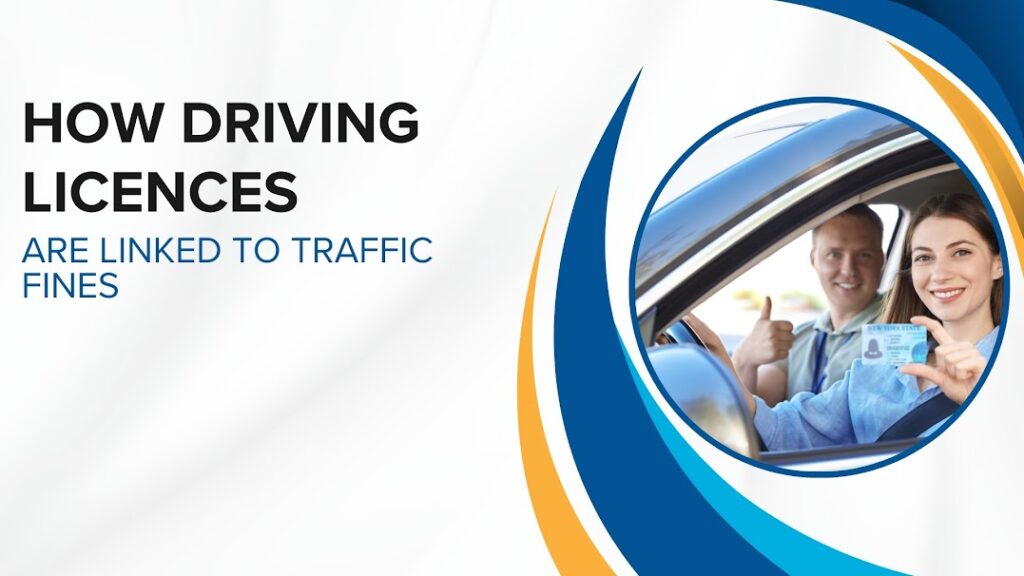
A driving licence is not just a permit to operate a vehicle – it is a legal document that connects drivers to road regulations, including traffic fines and penalties. Authorities worldwide use driving licences as a crucial link between individuals and their driving behavior, ensuring accountability and promoting safer roads.
1. The Role of Driving Licences in Traffic Law Enforcement
Traffic laws exist to maintain order on the roads, reduce accidents, and ensure public safety. A driving licence serves as an official record of a driver’s identity and history, allowing law enforcement agencies to track violations, impose fines, and enforce legal consequences when necessary.
Whenever a driver is caught violating a traffic rule—whether through direct police enforcement or automated surveillance systems like speed cameras—the fine is registered against their driving licence. This system ensures that offenders are held responsible and discourages reckless behaviour.
2. How Traffic Fines Are Assigned to a Driving licence
Traffic fines are linked to driving licences in multiple ways, including:
- Direct Ticket Issuance: When a driver is pulled over for an offence, such as running a red light or using a mobile phone while driving, the police issue a fine directly to their driving licence.
- Automated Traffic Systems: Speed cameras and red-light cameras automatically capture violations and link them to the vehicle owner’s driving licence through licence plate recognition.
- Points-Based Systems: Many countries operate a penalty points system where each offence adds points to a driver’s record. Accumulating too many points can lead to fines, suspension, or even revocation of the licence.
3. Digital Integration of Traffic Fines and Driving licences
With the advancement of digital technology, many governments have integrated their traffic management systems with national databases of driving licences. This allows real-time tracking of fines and penalties through:
- Online Portals: Drivers can check their fine history and pending payments online using their driving licence number.
- Mobile Apps: Many regions have introduced apps that notify drivers of new violations, allowing them to pay fines directly through digital platforms.
- Automated Notifications: Text messages and emails inform drivers of any violations linked to their licence, ensuring timely payment and preventing additional penalties.
4. The Impact of Traffic Fines on Driving Privileges
Accumulating traffic fines can lead to serious consequences beyond just financial penalties:
- Licence Suspension: If a driver repeatedly violates traffic laws, their licence may be temporarily suspended.
- Licence Revocation: In severe cases, authorities may permanently cancel a driving licence, requiring the driver to undergo retraining and reapply for a new one.
- Increased Insurance Premiums: Insurance companies often assess driving records when determining policy rates. A history of traffic fines linked to a licence can lead to higher insurance costs.
5. How Traffic Fine Systems Vary by Country
Different countries have their methods of linking driving licences to traffic fines:
- United States: Most states operate a demerit point system where fines and penalties are recorded against a driver’s licence. Accumulating too many points results in suspension.
- United Kingdom: Penalty points are recorded on licences, and exceeding a certain limit can lead to disqualification.
- India: The government has introduced digital traffic fine management through platforms like the e-Challan system.
- Germany: Drivers accumulate points in the Federal Motor Transport Authority system, and exceeding the limit results in a driving ban.
6. The Role of Digital Driver’s Licences in Fine Management
As digital driver’s licences become more common, managing traffic fines has become more streamlined. Many countries are now implementing:
- Blockchain-based licence systems to prevent fraud
- AI-driven monitoring to automatically detect violations
- Biometric authentication to ensure the right person is held accountable for traffic violations
7. How to Check and Pay Traffic Fines Linked to a Driving licence
If you want to check your fines, you can typically do so by:
- Visiting the official government website for traffic fines.
- Entering your driving licence number or vehicle registration details.
- Reviewing outstanding fines and making payments online.
Some countries offer discounts for early payment, while others impose additional penalties for late settlements.
8. Preventing Traffic Violations and Fines
To avoid fines and keep your driving licence in good standing, follow these best practices:
- Obey all traffic signals and speed limits.
- Avoid distractions such as using mobile phones while driving.
- Always wear a seatbelt and ensure passengers do the same.
- Keep track of your driving record through official government websites.
Suggested read:- Know the process of driving licence renewal in India
Conclusion
Driving licences and traffic fines are closely linked to ensure responsible driving and road safety. By adhering to traffic laws, staying informed about fines, and taking advantage of digital systems for payments, drivers can maintain a clean record and avoid penalties that may impact their driving privileges.





